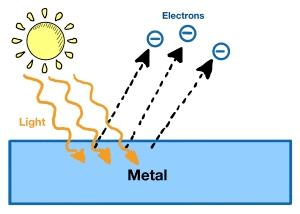Photovoltaic test application
Release time: 22-11-13 13:26 Number of views: two hundred and forty
Photovoltaic power generation
In the mid-19th century, power plants provided electricity for people. Over the years, power plants have become larger and stronger. However, it is only in recent years that we can directly use the sun as a power plant. To achieve this goal, we use photovoltaic (PV) systems. They convert solar radiation into electrical energy.
Operating principle of solar cell
Photovoltaic system is a facility that uses sunlight to generate electricity. The facility consists of various components, the core of which is the solar cell. They are responsible for converting light into electricity. But how does this solar cell work? Few people know that Einstein won the Nobel Prize in 1921 not because of his famous theory of relativity, but because he discovered the photoelectric effect. It is this effect that first makes it possible to convert light into electricity. The photoelectric effect shows that the light particles with enough energy can move electrons out of the material. This is exactly the principle used by PV system. Solar cells consist of specially prepared semiconductors exposed to sunlight.

The characteristic of semiconductors is that their electrons can only be loosely bound to the material. Therefore, the energy of light with sunlight is enough to generate free electrons in semiconductors. These free electrons now ensure the flow of current and the generation of voltage. The open circuit voltage of a typical solar cell is about 0.6 V. In practical applications, several solar cells are connected in series, which increases the voltage. Some people call it a solar module, which can provide a typical voltage of 38 V and a power of 240 W.
Efficiency as a key parameter
The efficiency of a typical PV system installed privately is up to 25%. This means that solar cells can convert 25% of the incident solar radiation into electrical energy. At first glance, there is still much room for improvement. In fact, it is possible to achieve significant efficiency gains, but only if you pay (usually more) surcharges. The reason is that semiconductor is the basic building block. Solar cells in the private sector are usually made of silicon. Because silicon is the second abundant material in the crust, this silicon photovoltaic system is cheap. In space applications where price is a secondary factor, multilayer solar cells are used. The battery consists of several layers of different semiconductors, which can achieve 30-40% efficiency. The orientation and inclination of photovoltaic system will also affect its energy production. The dip angle of about 30 ° is appropriate, and the plant facing the equator can significantly increase energy production. In practice, there are also photovoltaic systems running along the solar path with the help of motors.

Photovoltaic system measurement - from Dewei Chuang Dewetron Solutions for
The primary task of operating photovoltaic system is to optimize efficiency. Suppose an ordinary photovoltaic with an efficiency of 25% has an annual power generation of 5000 kWh, and only a 5% efficiency decline will result in a loss of 1000 kWh. After conversion, the energy price is 0.22 euros/kilowatt hour, which is about 220 euros per year. So you can see that even a small reduction in efficiency will lead to high costs. In order to avoid this situation, it is necessary to carry out routine inspection on performance data, especially for large power plants. At DEWETRON, we specialize in such measurements. The power analyzer developed and produced internally can be customized according to your specific needs. Once you measure the data, our OXYGEN The software allows you to easily determine reactive power, efficiency and more.









